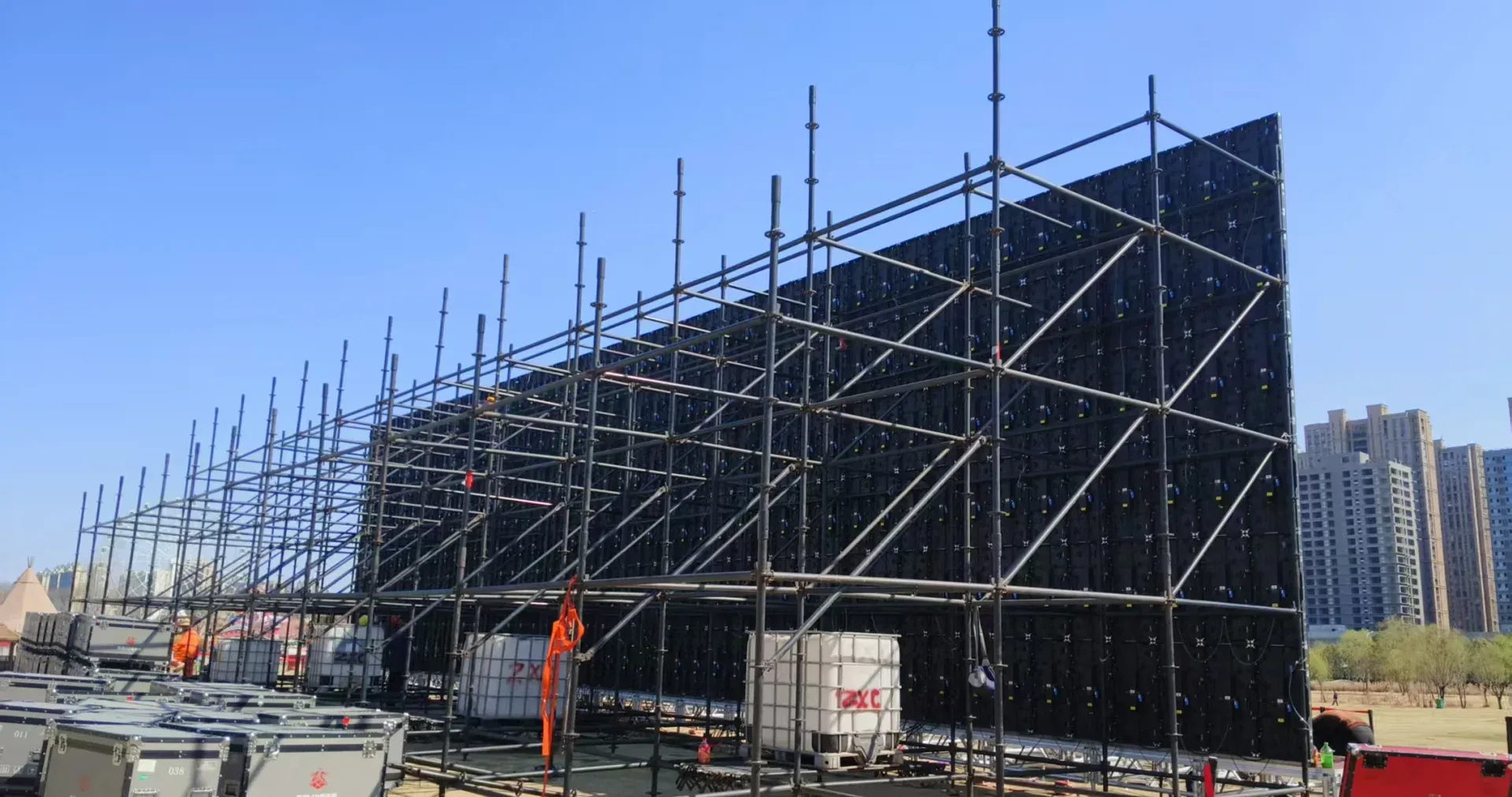Choosing the right pixel pitch for LED Video Walls requires a balance between clarity and cost. Small pitch (such as P1.5) is suitable for indoor close-up viewing, and large pitch (such as P10) is suitable for outdoor long-distance viewing. Accurately select according to viewing distance, content type and budget to ensure the best display effect and cost performance.

1. The core concept of LED Video Walls pixel pitch
Definition: Pixel pitch refers to the horizontal/vertical distance between the centers of two adjacent LED lamp beads, in millimeters (mm). For example, P1.5 means that the lamp bead pitch is 1.5mm.
Influence:
Clarity: The smaller the pitch, the higher the resolution and the more delicate the picture.
Cost: The smaller the pitch, the more lamp beads per unit area, and the higher the cost.
Visual distance: The larger the pitch, the longer the effective viewing distance.
2. Key factors for selecting pixel pitch
1. Viewing distance
Core principle: The pixel pitch must match the viewing distance to ensure that the audience can see the details clearly.
Calculation formula:
Minimum viewing distance (meters) ≈ pixel pitch (mm) × 300 ~ 500
Example:
P2 (2mm pitch) → minimum viewing distance is 6m~10m
P1.5 (1.5mm pitch) → minimum viewing distance is 4.5m~7.5m
Application scenarios:
| Scene | Recommended Pixel Pitch | Reason |
|---|
| Indoor short distance (e.g., conference rooms, shopping malls) | P1.2~P2.5 | Requires high clarity for close-up viewing. |
| Indoor medium distance (e.g., theaters, gymnasiums) | P3~P5 | Balances cost and visual effect for medium viewing distances. |
| Outdoor long distance (e.g., billboards, stadiums) | P10~P20 | Optimized for long-distance visibility with cost efficiency. |
2. LED Video Walls size and resolution
Resolution requirements:
If you need to play 4K content (3840×2160), the screen size and pixel pitch must meet the following requirements:
Screen width (meters) ≈ total number of pixels (horizontally) × pixel pitch (mm) ÷ 1000
Example:
The width of 4K content on a P2 screen ≈ (3840 × 2mm) ÷ 1000 = 7.68 meters
Avoid excessive pixelation: Too small a pitch will not show its advantage when viewed from a distance, but will increase costs.
3. Content type
High-detail content (such as text, graphics): requires a smaller pitch (such as below P1.5).
Simple content (such as advertising slogans, clocks): a larger pitch (such as above P5) can be selected.
4. Budget constraints
Relationship between cost and pitch: For every 0.5mm reduction in pitch, the cost may double.
Recommended strategy:
Indoor: P1.5~P3 is preferred, balancing clarity and cost.
Outdoor: P5~P10 has the best cost performance.
5. Environmental factors
Indoor: High contrast and small pitch (such as P1.2~P2.5) are preferred.
Outdoor: High brightness (≥5000nits), waterproof and dustproof are required, and the pitch is ≥P5.
3. Common pixel pitch types and application scenarios
| Pixel Pitch | Typical Application Scenarios | Cost Reference |
|---|
| P0.9 | Ultra-high-definition indoor close-range (e.g., control rooms, VR) | Very high (premium) |
| P1.2 | High-end indoor displays (e.g., exhibitions, museums) | High |
| P1.5 | Mall screens, conference rooms | Medium-high |
| P2.5 | Education, general indoor advertising | Medium |
| P3 | Stadiums, theaters | Medium-low |
| P5 | Outdoor billboards, traffic signs | Low |
| P10 | Highway ads, large public squares | Very low |
4. Selection steps and tools
1. Step 1: Determine viewing distance
Measure or estimate the farthest viewing position of the audience (for example: the average distance of the audience of the shopping mall large screen is 5 meters).
2. Step 2: Calculate the minimum pixel pitch
Use the formula: pixel pitch ≤ minimum viewing distance ÷ 500
Example: 5 meters viewing distance → 5000mm ÷ 500 = 10mm → Select ≤P10 (but the actual needs need to be combined with content requirements).
3. Step 3: Match screen size and resolution
Calculate the required resolution:
Resolution (horizontally) ≈ screen width (meters) × 1000 ÷ pixel pitch (mm)
Example: 3-meter wide screen + P2 → 3000mm ÷ 2mm = 1500 pixels
4. Step 4: Verify cost and effect
Compare solutions with different pitches and choose the best solution with the best cost performance.
5. Common misunderstandings and solutions
Misunderstanding 1: Blind pursuit of minimum pitch
Problem: Small pitch is expensive and has no advantage at long distances.
Solution: Choose according to the actual viewing distance. For example, the effect of P3 is not much different from that of P1.5 at 20 meters.
Misunderstanding 2: Ignoring content adaptability
Problem: High-resolution content needs to match high pixel density.
Solution: When playing 4K content, ensure that the screen width and pixel pitch meet the formula.
Sixth, Summary: Quick Selection Reference Table
| Scene | Recommended Pixel Pitch | Reason |
|---|
| Indoor Meetings/Malls | P1.5~P2.5 | Close-up viewing requires high clarity. |
| Stadium/Auditorium | P3~P5 | Balances cost and visual effect for medium distances. |
| Outdoor Billboard | P10~P20 | Optimized for long-distance visibility with cost efficiency. |
| Highway Signage | P20~P30 | Designed for extreme long distances and harsh environments. |
To choose the right LED Video Walls, please contact Hengshi Company, which can provide you with high-quality and low-cost products
